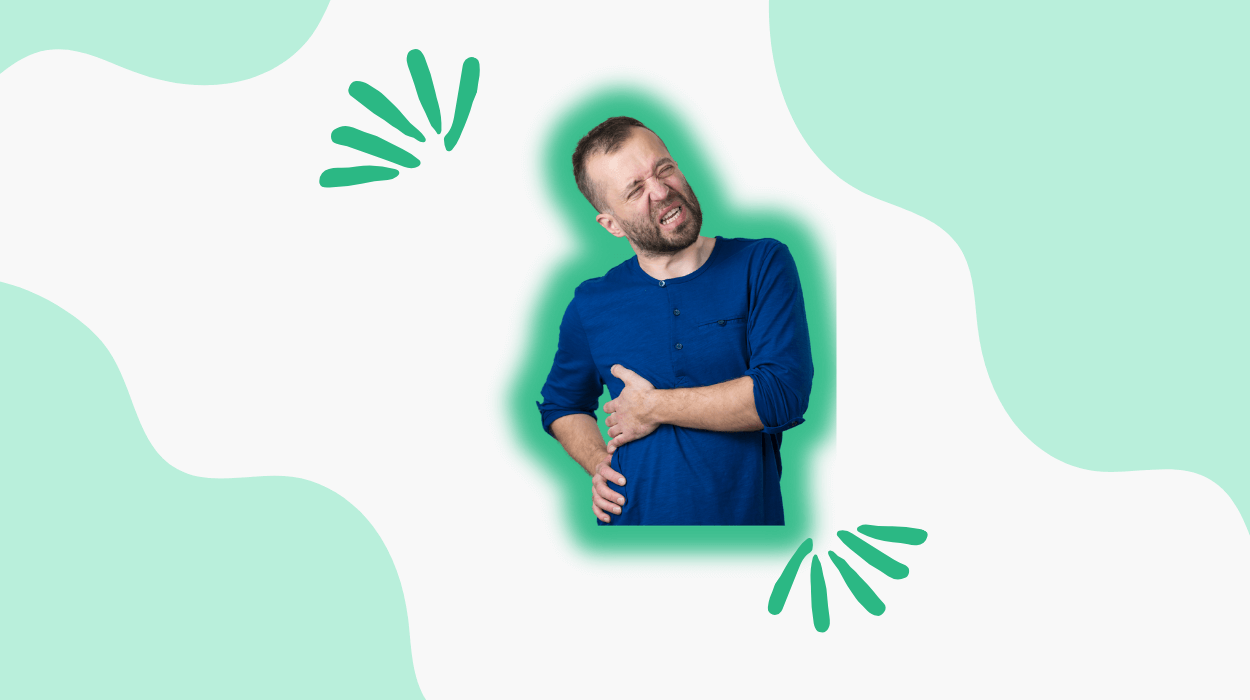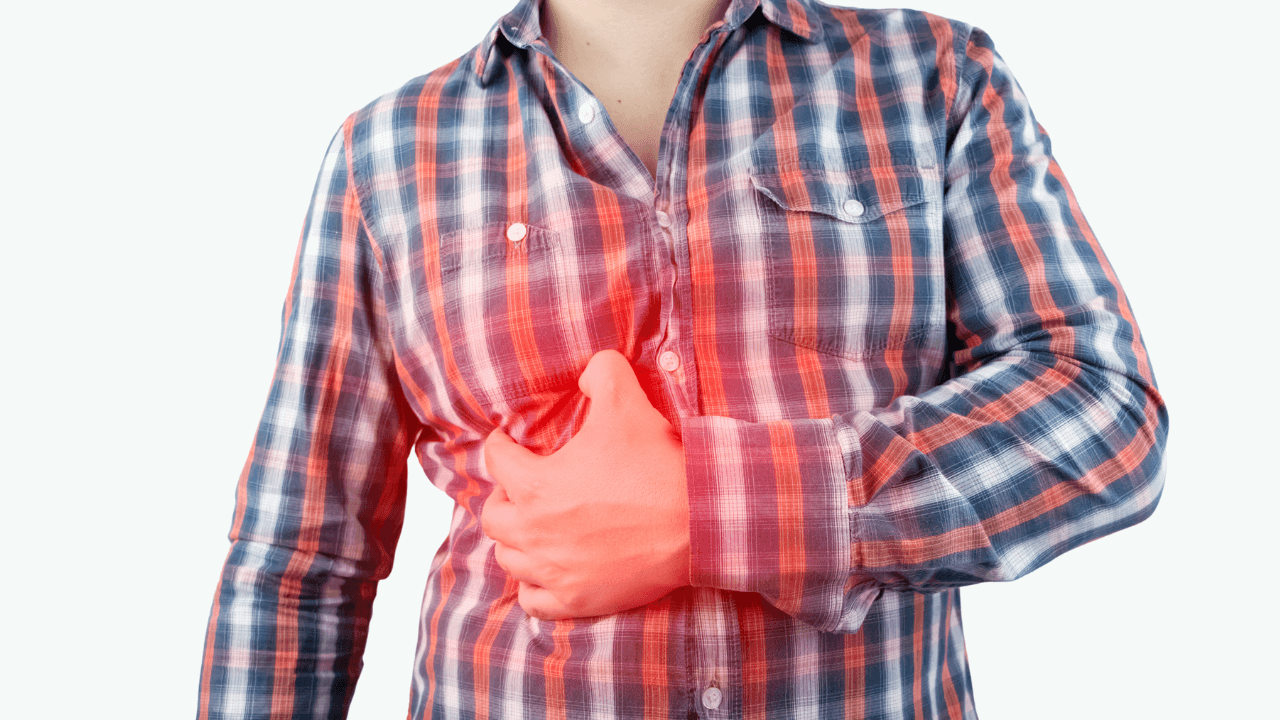

Experiencing pain in both sides of the ribs can be discomforting, raising concerns about the health of vital organs sheltered under the ribs. Pain under the ribs could be caused by organs present in your chest cavity.
The chest cavity contains the intestines, gall bladder, stomach, and diaphragm. You might feel discomfort or pain on one or both sides of the ribs.
Rib pain may affect the body’s support and stability while restricting the expansion and contraction of the thoracic cavity during breathing.
Muscular strain, injury, and inflammation could cause pain in the rib cage. However, understanding the underlying cause of the sharp rib pain is crucial to taking proper measures on time.

A severe fall or car accident could cause fractures in the ribs like the sternum (breastbone) or clavicle (collarbone). Any of these fractures can cause rib pain.
Trauma to the chest wall can also result in injury to the underlying lung, causing pain that mimics rib pain. When trauma causes bruising of a lung, it is known as a pulmonary contusion that can cause significant discomfort and contribute to rib pain.
The intercostal muscles, which join the ribs, could get strained or pulled when overexerted during heavy lifting or intense coughing. This strain could lead to rib pain on both sides.
A typical chest pain can occur due to sore chest wall muscles or psychological reasons like stress and anxiety.
It is important to note that normal chest pain can manifest differently for each person. Some may experience a dull ache, while others may feel sharp or intermittent pain.
You should consult a doctor if you are experiencing symptoms mentioned below, along with chest pain. Other chest pain symptoms that require immediate medical attention may include:
A primary care physician can run a few tests, including a stress EKG (electrocardiogram), to evaluate the heart’s electrical activity during exercise and suggest appropriate treatment.
Acute costochondritis, or chest wall syndrome, is an inflammatory condition that affects the flexible cartilage connecting each rib to the breastbone.
The symptoms of acute costochondritis include a sudden, sharp, aching pain in the chest wall, especially where the breastbone connects to the ribs. The pain worsens with deep breathing or any movement.
You can know about acute costochondritis through a physical evaluation and tests like X-rays or CT scans.
Treatment for acute costochondritis includes rest and the use of over-the-counter nonsteroidal anti-inflammatory drugs to alleviate pain and inflammation.
Tuberculosis is a lung infection caused by Koch’s bacillus or Mycobacterium tuberculosis (M. tb). It is a contagious disease that could negatively affect the lungs and spread to other organs, such as the brain.
It is transmitted through the air when an infected person coughs, exhales, or speaks, and someone else inhales the bacteria. It is not transmitted through other means.
People with Tuberculosis may have symptoms such as a severe cough that might bring up blood, chest pain, weakness, weight loss, chills, fever, and night sweats.
Tuberculosis is diagnosed through the skin, blood, sputum test, and chest X-rays. When diagnosed, the treatment of TB includes a course of specialized antibiotics under medical supervision, rest, and supportive care.
Pulmonary embolism happens when a blood clot, known as an embolus, travels through the bloodstream and becomes lodged in the pulmonary arteries, obstructing blood flow to the lungs.
It may occur due to blood clotting in the veins of the legs, a condition called deep vein thrombosis (DVT). Lack of physical activity may increase the possibility of DVT and subsequent pulmonary embolism.
Common signs of Pulmonary embolism include trouble breathing, chest pain, anxiety, lightheadedness, and a fast, irregular heartbeat. You should not ignore these symptoms and seek immediate medical attention.
A hypertensive crisis, also known as malignant hypertension, occurs with a rise in blood pressure to levels higher than 180/120.
It usually happens by untreated high blood pressure caused by stress, poor diet, weight gain, or use of illegal drugs.
Hypertensive crisis symptoms include chest pain, severe headache, blurred vision, nausea and vomiting, and shortness of breath.
Bacterial pneumonia is an infection caused by Streptococcus pneumoniae that can lead to pain in the ribs and severe complications if left untreated.
It often manifests as fatigue, fever, chills, pain, trouble breathing, and cough that brings up mucus. Older patients may exhibit symptoms such as low body temperature and confusion during Bacterial Pneumonia infection.
People with weakened immune systems and chronic heart or lung conditions are more prone to Bacterial Pneumonia infection.
You can get checked for bacterial pneumonia through blood tests and chest X-rays. The primary treatment for bacterial pneumonia is antibiotics.
Panic disorder is a mental health condition indicated by sudden and intense feelings of anxiety and fear. It is often accompanied by physical symptoms such as sweating, a pounding heart, and shortness of breath.
Panic disorder may cause chest pain, which could be felt in the ribs. You may feel like tightness, tension, and extreme discomfort in the rib cage area.
Gastroesophageal Reflex Disease, or GERD, may cause extreme discomfort and a burning sensation below the ribs.
It could be due to the stomach acid flowing backward into the food tube connecting the stomach and the mouth. You may feel like food is stuck behind your breastbone.
Here are three home treatments that may help alleviate rib pain:
If an infection is the cause of your rib pain, antibiotics could treat conditions such as pneumonia or lung infections that can cause rib pain.
Doctors may prescribe the use of proton pump inhibitors (PPIs) to reduce stomach acid and alleviate discomfort in people with acid reflux or gastrointestinal disorders. PPIs are used to treat conditions like gastritis or GERD that may contribute to rib pain.
Complications from gallstones or injuries might require surgery. Surgical interventions could help address underlying conditions that are causing rib pain and provide long-term relief.
You should seek medical help from a healthcare professional if experiencing persistent or worsening rib pain that worsens at night or upon waking.
The rib pain can come with symptoms like increased fatigue, decreased appetite, unexplained weight loss, fevers, and chills, which require immediate evaluation to prevent future concerns.
Thus, a doctor could conduct a physical examination, medical history review, and lung function tests to evaluate your rib condition thoroughly. These tests may help identify the underlying cause of the rib pain and guide the treatment plan.
Rib pain can make breathing hard, put pressure on the chest, and twist your body due to a constant feeling of uneasiness. It can be caused by various reasons, from a pulled muscle to a broken rib or an injury.
Taking hot baths or using a cold compressor could help alleviate swelling and inflammation in the rib cage. Resting adequately and avoiding pressure on the inflamed area may increase the recovery time and process.
You can also try home remedies like deep breathing exercises for temporary pain relief. However, it is better to seek immediate medical support if the pain persists.
Tyler Read earned an undergraduate academic degree from Sonoma State University, California and is a certified personal trainer (CPT) with NASM (National Academy of Sports Medicine). With over 16 years of experience, Tyler has trained clients both online and in-person.
He is passionate about helping others turn their love for fitness into a career. Tyler has worked with many local and commercial gyms before establishing his successful private personal training business, which he continues to operate.
